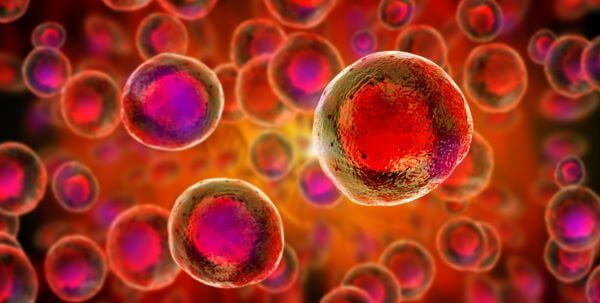Human beings are complex multicellular organisms made up of trillions of cells. Scientists estimate that the adult human body contains around 37 trillion human cells and 200 different cell types. The human microbiota (a collection of microorganisms found primarily in the gut) consists of a further 10-100 trillion microbial cells.

How Many Different Cell Types Are There in the Human Body?
The human body is made up of around 200 different cell types, each with a unique structure, size, shape, and set of organelles. Each type of cell is adapted to perform a specific function, for example:
- Red blood cells are adapted to transport oxygen around the body
- Muscle cells are adapted to enable movement
- Adipocytes (fat cells) are adapted for fat storage
- Neurons (nerve cells) are adapted to transmit nerve impulses
- Sex cells (sperm and eggs cells) are adapted for reproduction
Counting the Cells in the Human Body

We know that the adult human body contains around 37 trillion cells, but how did we arrive at this number? Counting the cells of the human body is a complex task, and it wouldn’t be possible to count every individual cell. Therefore, the number 37 trillion is actually an estimate of the true number of cells in the human body.
To reach this number, scientists painstakingly combed the existing scientific literature for details on the numbers and types of cells found in individual body structures. By estimating the total number of each type of cell in the human body and adding them all together, they eventually concluded that the human body contains approximately 37.2 trillion cells.
To learn more about cells and different cell types, click here.
